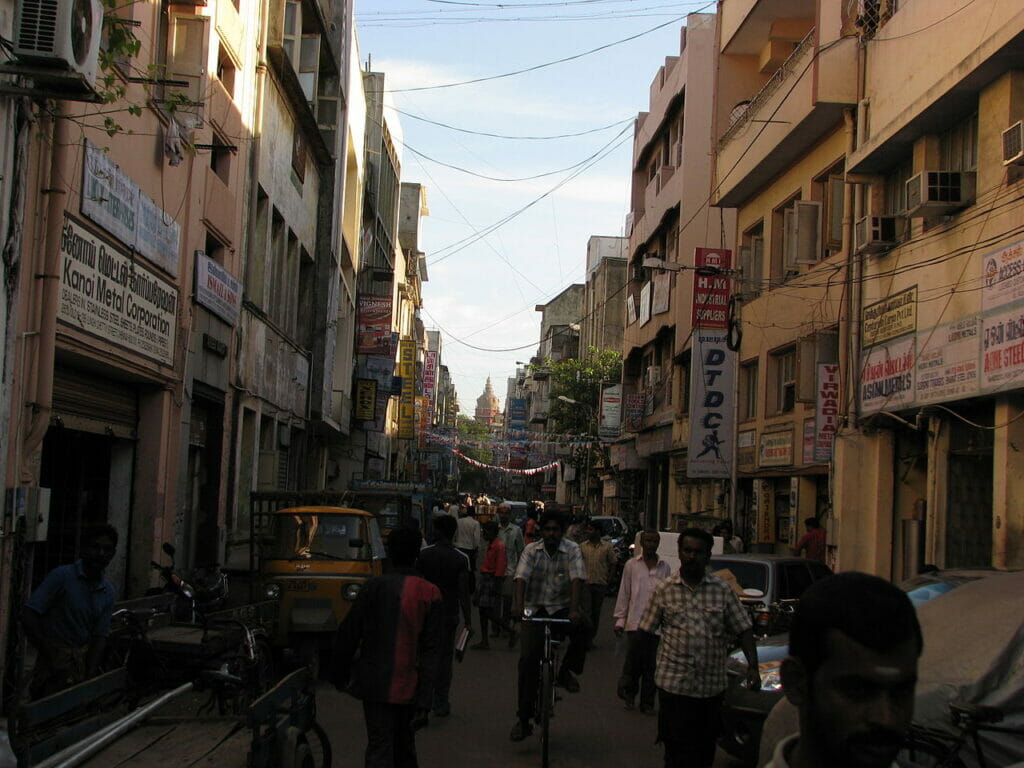The whole of North Chennai will be the subject of a survey to identify gaps in infrastructure. This is part of the Rs 1,000 crore Vada Chennai Valarchi Thittam announced by the Chief Minister for the equitable development of the city. As many as 1,000 (some reports have it as 500) volunteers from city colleges have been roped in to conduct the survey, which it is said will cover the social, economic, and psychological aspects of life in that part of the city.
As per a press release of the Greater Chennai Corporation, the survey will cover Tiruvottiyur, Manali, Madhavaram, Tondiarpet and Royapuram and Thiru Vi Ka Nagar, Kolathur and Anna Nagar.
Read more: How has TNPCB failed North Chennai?
Survey as first step in North Chennai development plan
All of this is to the good, given that this is a part of the city which has historically been neglected. It is an interesting commonality among the four metropolises of India that their southern halves have always received far more attention than the northern equivalent. In Chennai, the reason is not far to seek.
The north was where most of the industrial development once happened, while the south was essentially residential, meant for the middle and upper classes. That resulted in skewed development. You need to only visit each of these areas in turn to see how they can in fact be two different worlds.
There are however concerns about the survey itself. It has for instance a total of 96 questions – a humungous number for any respondent to sit and answer. And there is a lack of focus on what the survey itself seeks to find out.
There are three heavyweight bodies behind the exercise – the Directorate of Town and Country Planning, the Greater Chennai Corporation and the Tamil Nadu Urban Habitat Development Board. The aim you would assume would be largely focused on infrastructure. Instead, going by the announcements at least, it is the intangible that the survey seems to be seeking out.
On the one hand, it is said the questions will seek details on medical and education infrastructure access, hygiene and safety, and drug abuse. On the other, it also seeks to study well-being, attitudes to life, expenditure patterns, respondents’ feelings on waking up each morning and their stress levels. There are it appears questions even on relationships with neighbours. The survey has set itself diverse objectives, all of which may dilute its focus.
Read more: As rains lash the city, North Chennai residents still await flood mitigation measures
Time-bound approach for North Chennai’s development
The timeline set for the completion of the survey is not specified. In a city that is forever changing, speed is of the essence in the completion of such projects. The entire George Town area was similarly supposed to be the subject of a survey. That was under the previous regime.
It focused on infrastructure alone and planned to cover all 11,000 and odd buildings in the region, the survey to be administered by college students. Announced in 2018 it did not take off owing to the pandemic. It was commenced in 2021 and there is no further news about its progress.

The CMDA has said it awaits the conclusion of the exercise before it sets about planning the development of the area. And so George Town’s future depends on a survey conducted by college students which will see completion sometime in the future.
If the present study is to follow the same pattern, Vada Chennai may not see much of the Rs 1,000 crore being spent on it for some time to come. It is essential that the fanfare that accompanies the launch of such schemes also includes a short note on deliverables and a mechanism to monitor progress. In the absence of these, such exercises are nothing more than publicity stunts.
[This article has been republished with permission from Madras Musings where it first appeared. The original piece can be read here.]